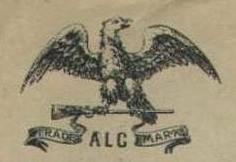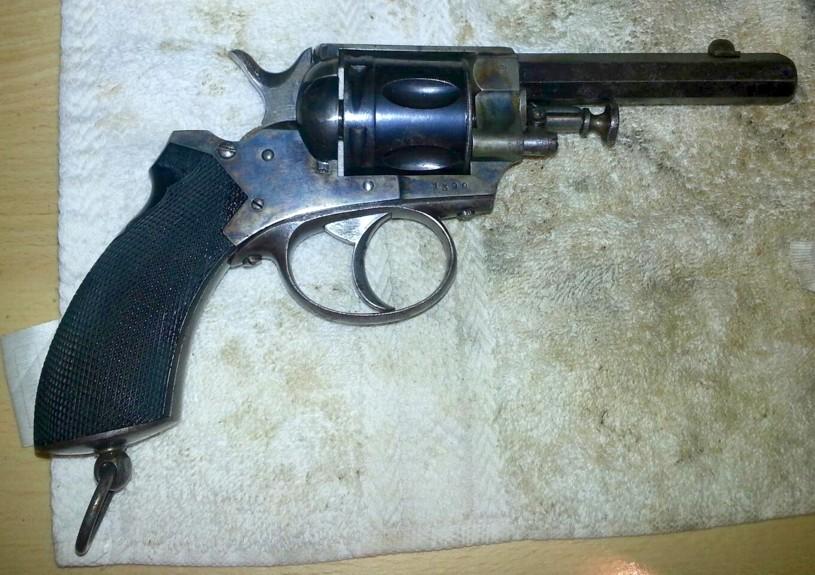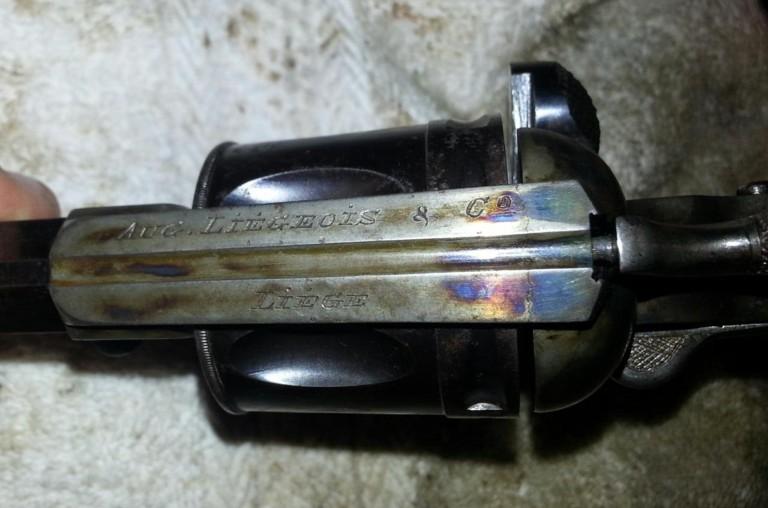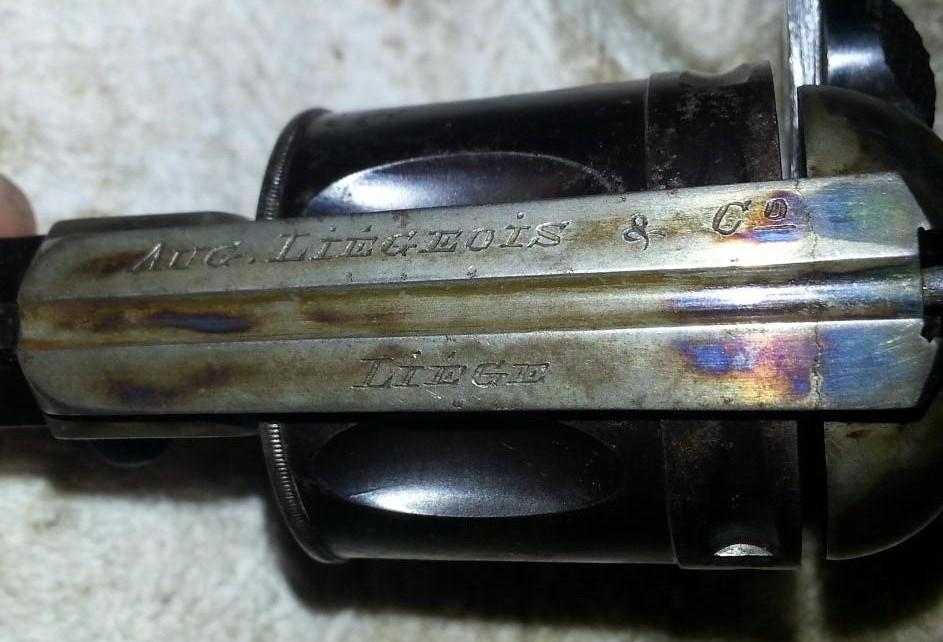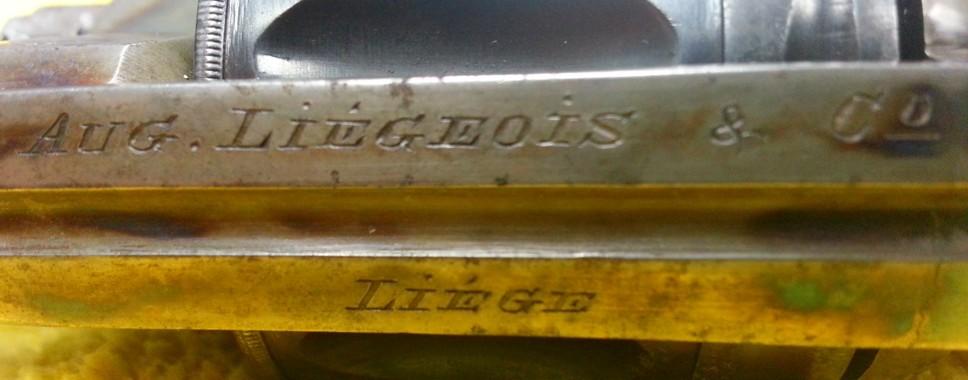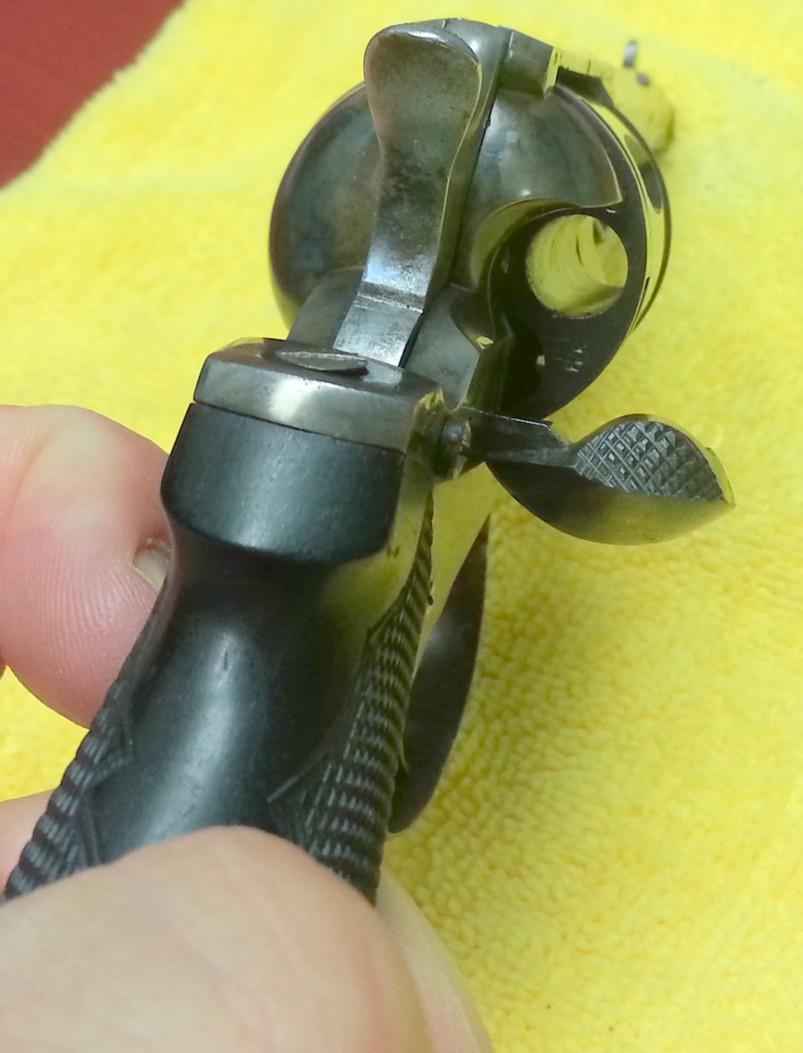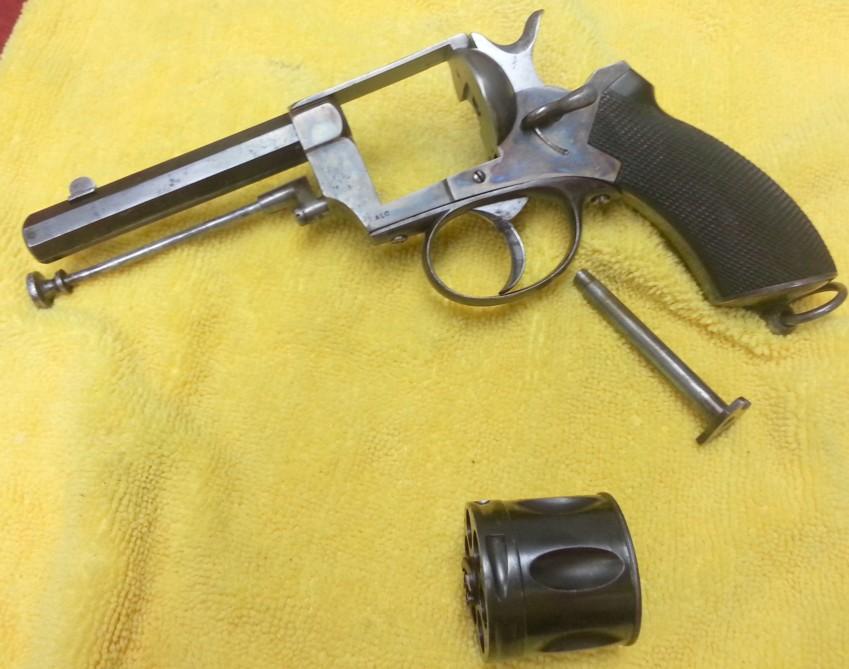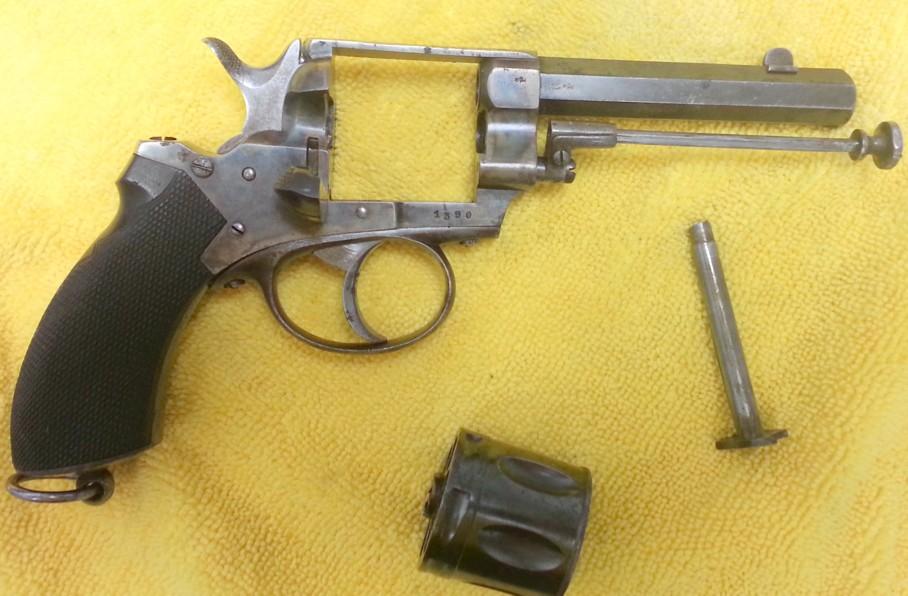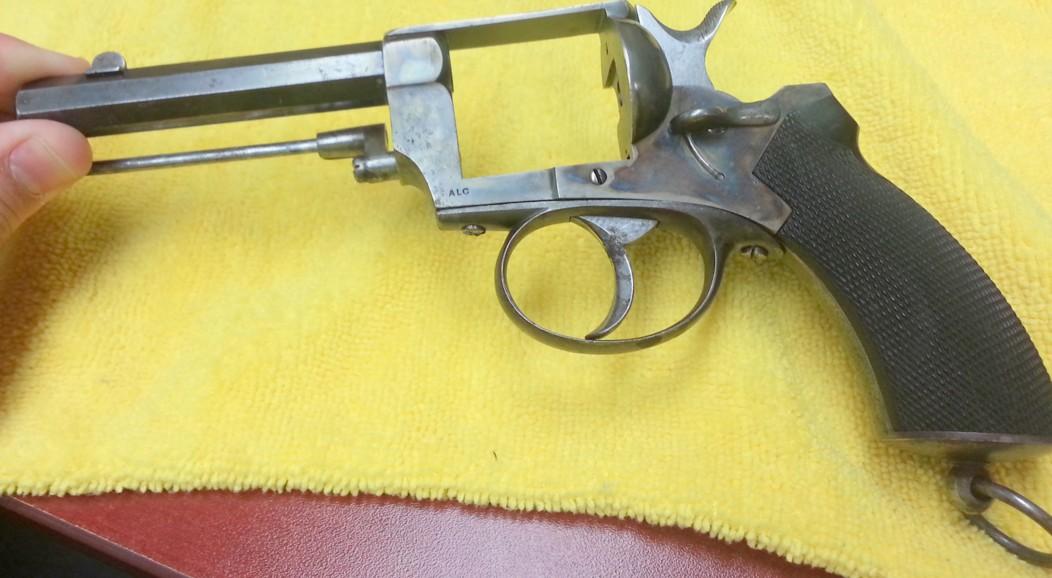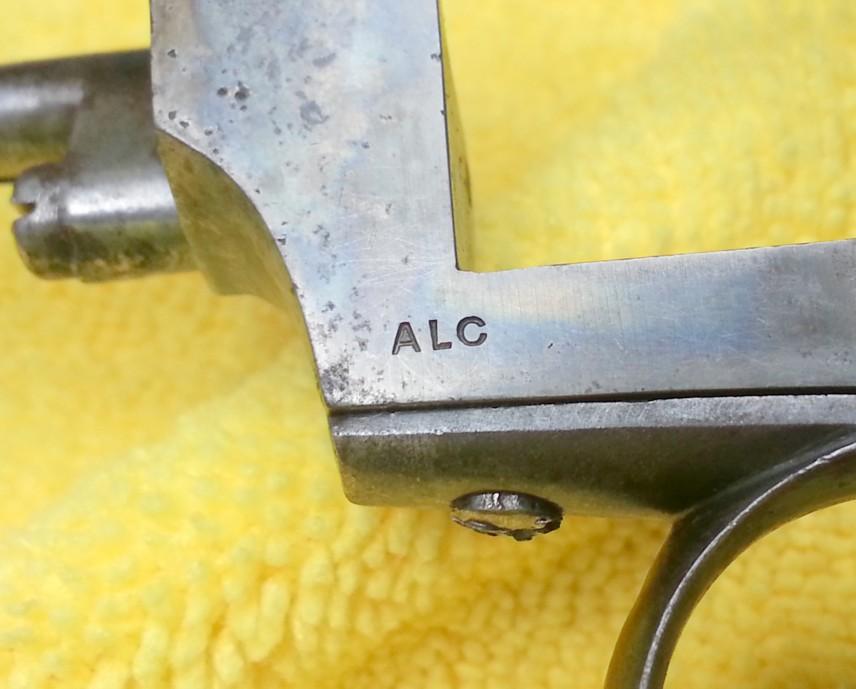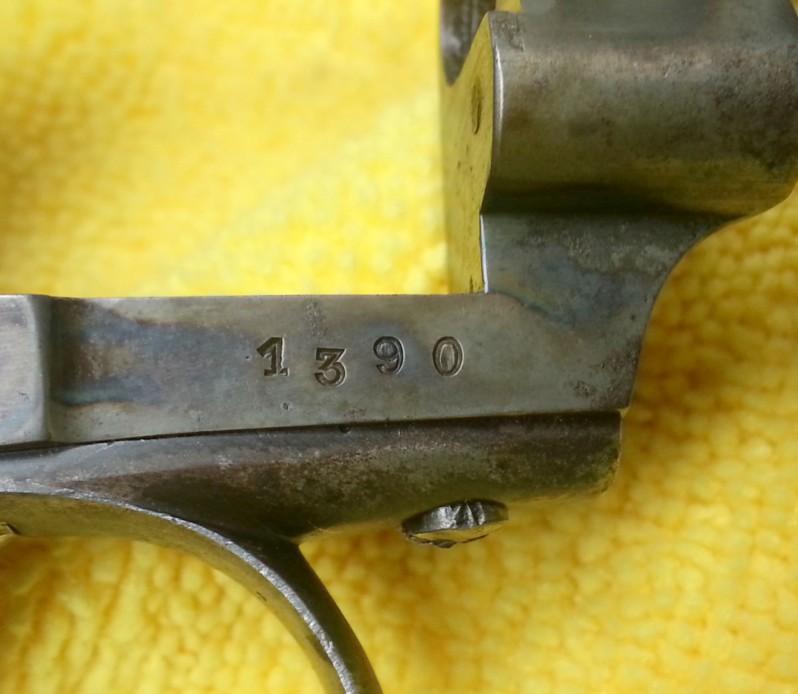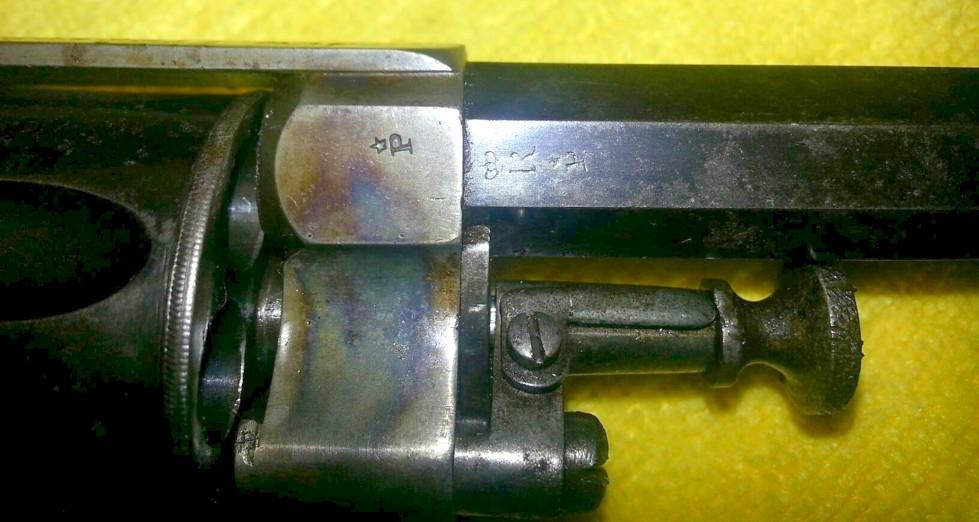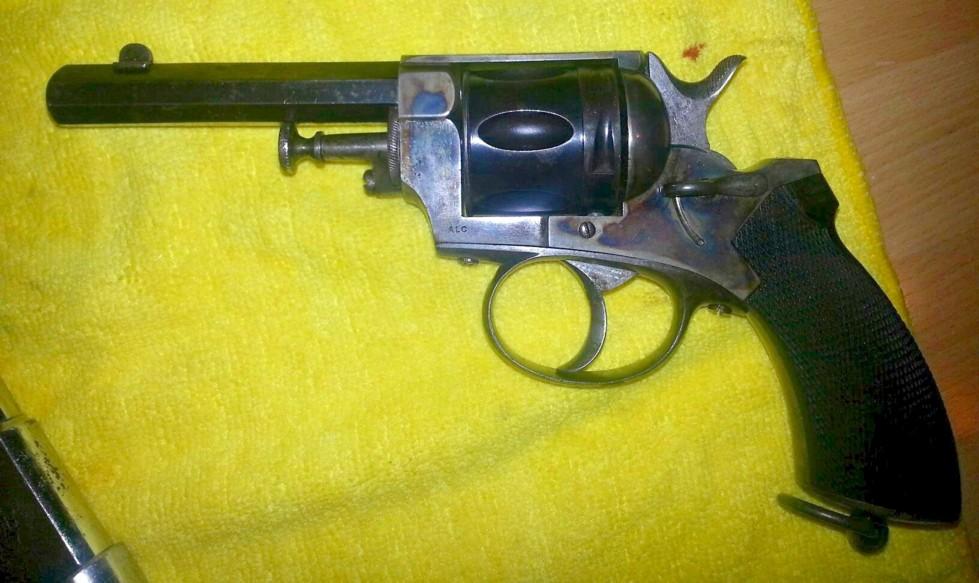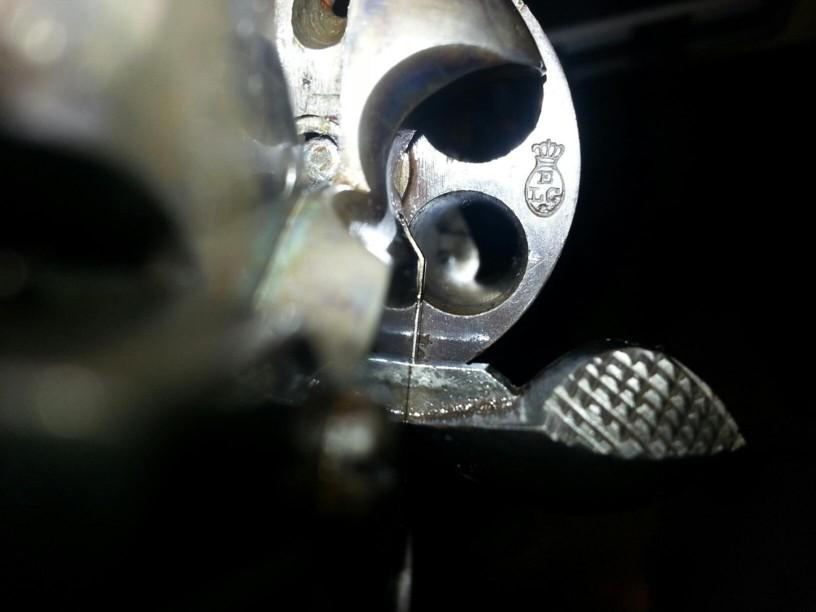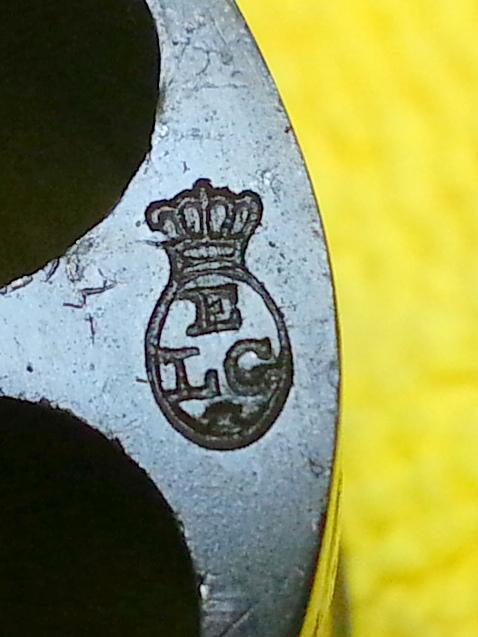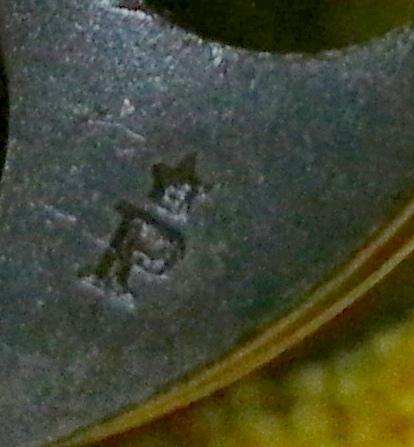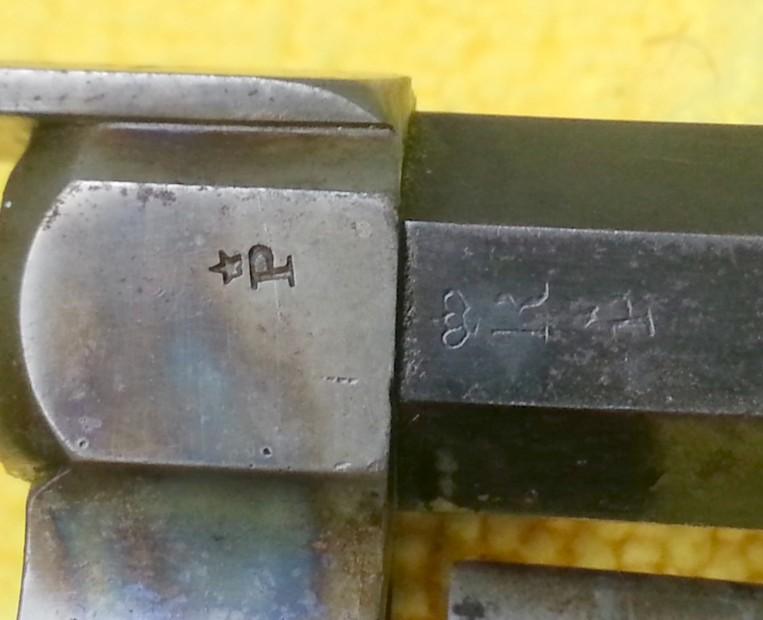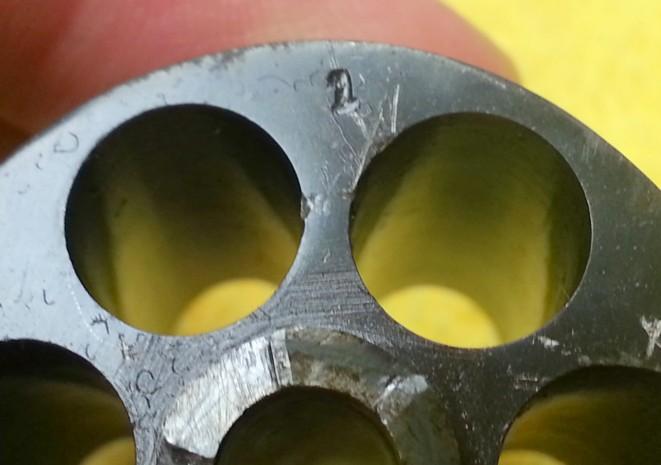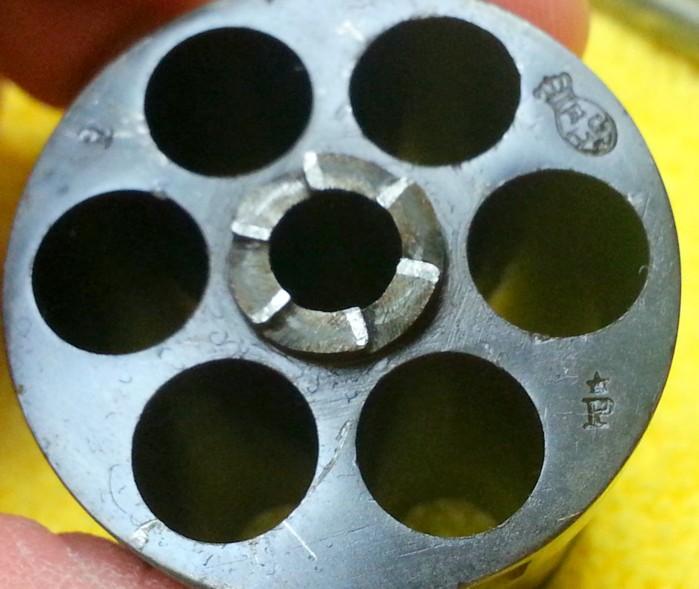Some of the most beautiful work of this craftsman, and many others, are in this book “Liège Gunmakers through their Work. 1800 - 1950”.
For more detail see: LIEGE GUNMAKERS
Auguste Liégeois & Cie
Here is a small revolver with six rounds of unspecified caliber (probably .320) with a very peculiar fishtail handle.
The markings
ELG on star in crowned oval: accepted between 1893 and 1968
P under star: countermark of the controller between 1877 and 1968
1184: probably the number of the gun
98 and 5.1: unidentified
ALC: the initials of Auguste Liégeois and C°
The weapon is relatively well known and is attributed to Emile Fraipont, who was enrolled in the Liège Test Bench from 1903 to 1927.
But there is a catch in that the gun in question does not bear the Clic-Clac marking. We do not know when the trademark was created or whether it was registered (as far as we know it was not).
The history of
ALC
is given below.
We do not
know if this fishtail grips was patented, by whom or when.
The presence of the initials ALC and the absence of the Clic-Clac brand leads us to think that it is still a production of the company Auguste Liégeois et C°, thus from before 1903. Although it is perfectly plausible that Emile Fraipont continued to produce these revolvers from the time of the takeover of ALC and subsequently added the name Clic-Clac. For example, it appears in the Alpha Catalogue of 1911 and in the catalog of GE Lewis of Birmingham in 1914-1915.
Finally, it should be noted that there are also models without the initials ALC and the words Clic-Clac.
GP avec HPH et PHL







Auguste Liégeois & Cie
Belgian
copy of a Tranter type saloon / garden pistol (parlor pistol or saloon pistol
according to the sources), in calibre 22 annular (it chamber the ammunition of
22 long Z). Total length 28.5 cms. Serial number is 1307. Several markings: ALC
above the serial number, as well as various Liège punches on the scale (AE glued
under the crown) and under the barrel.
According
to my research, the Tranter patent from which it comes dates back to 1866
(British patent No. 2113).
The initials
ALC
confirm that it is a realisation of the company
Auguste
Liégeois et C°.
JJB




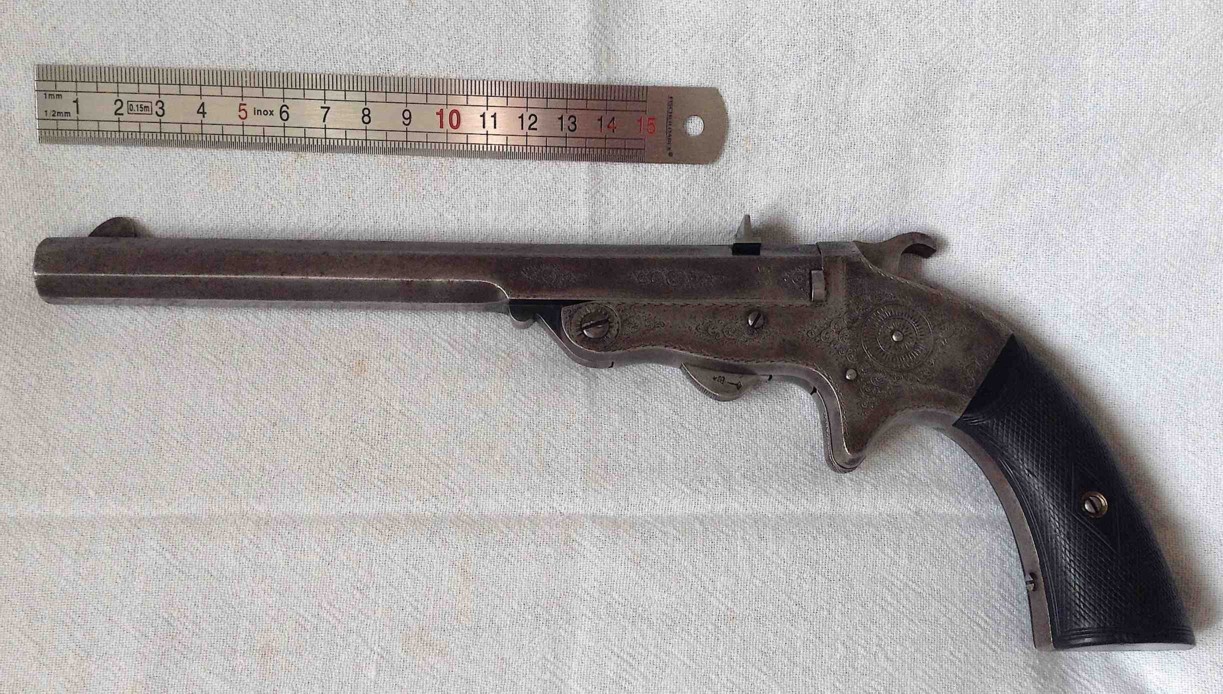






Auguste LIEGEOIS & Cie
Revolver of the type CONSTABULARY or CONSTABLE derived from the Irish R.I.C. It is with central percussion. The ellipse cylinder is equipped with six rooms (Calibre not communicated?). The striped steel barrel is with eight sides with front sight in half-moon placed in a dovetail. The weapon is equipped with a swivelling rod to introduce all with all into the rooms to expel the casings of them. The carcass comprises on the left side a pedal-safety intended to block the weapon and to prevent an inopportune shooting! The trigger is curved and protected from a trigger guard.
The loading is practiced by the right side door dropping thanks to the action of an internal spring. The handle with “busc” east seems it cast solid and squared in what seems me to be hardened rubber (to be checked?). This handle ends in a ring of cap and its screw-pivot.
Punches
This weapon carries the lawful punches of the proofhouse of LIEGE, namely:
ELG* in a crowned oval: final acceptance post 1893.
P*: countermark of the controller post 1877.
R crowned: rifled bore, of use of 1894 to 1968.
Marks
Auguste LIEGEOIS & Cie LIEGE: Auguste LIEGEOIS was first of all registered only with the proofhouse of LIEGE of 1892 to 1895. In 1895, it formed a “company” of 1895 to 1902. In 1903, the business is taken again by FRAIPONT Emile street Monulphe, 45 in LIEGE. It does not seem to have deposited patent!
A.L.C.: company Auguste LIEGEOIS since 1895.
1390: serial number.
Appendix: heading of letter of LIEGEOIS A.
GG
